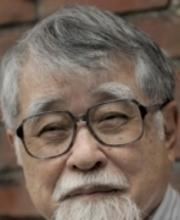Name Susumu Kuno Role Author | ||
 | ||
Awards Guggenheim Fellowship for Humanities, US & Canada People also search for Ken-ichi Takami, William Aaron Woods, Young-Key Kim-Renaud Books The structure of the Japan, Grammar and discourse, Studies in Korean syntax an, Functional Syntax: Anaphora | ||
Notable students William Aaron Woods | ||
Susumu Kuno (久野 暲, Kuno Susumu, August 11, 1933-) is a Japanese linguist and author. He is Professor Emeritus of Linguistics at Harvard University, where he received his Ph.D. degree in 1964 and spent his entire career. He received his A.B. and A.M. from Tokyo University where he received a thorough grounding in linguistics under the guidance of Shirō Hattori. His postgraduate research focused on the Dravidian languages. It was through S.-Y. Kuroda, an early advocate of Chomskyan approaches to language, that Kuno undertook his first studies in transformational grammar. In 1960 he went to Harvard to work on a machine translation project.
Contents
Kuno is known for his discourse-functionalist approach to syntax known as functional sentence perspective and for his analysis of the syntax of Japanese verbs and particularly the semantic and grammatical characteristics of stativity and the semantic correlates of case marking and constraints on scrambling. However, his interests are broader. In the preface to the second of a pair of festschrifts for Kuno, its editors describe these interests as "[extending] not only to syntax, semantics, and pragmatics, but also to computational linguistics and other fields such as discourse study and the processing of kanji, Chinese characters used in Japan".
The Structure of the Japanese Language
Kuno's most widely read book is his innovative study, The Structure of the Japanese Language, which set out to tackle what nearly all previous grammars of that language had either failed to adequately explain or wholly ignored. The issues he analyses here are a small restricted group of features of the language overall, but of crucial importance for mastery of Japanese, features which 'make Japanese Japanese' and mark it out from other languages, including those, especially, which share the basic SOV structure of that language. The Subject-Object-Verb word order is a pattern he associates with 4 notable features characteristic of Japanese grammar, namely:-
(1) Its postpositional, as opposed to prepositional features.
(2) Its left-branching feature in syntactic analysis.
(3) Its backward working phrase deletion pattern.
(4) Its freedom from constraints to place interrogative words in sentence-initial position.
Using the insights of transformational grammar, Kuno sketches out what standard grammars do not tell their readers, i.e., when otherwise normal grammatical patterns can not be used. In this sense, the work constituted an innovative 'grammar of ungrammatical sentences'.
